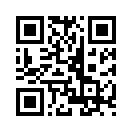During my 20 plus years in the radio bs, I mean radio business, I have discovered that there are lots and lots of people who can create radio bs and if they are in the sales and advertising part of this business, then that is dangerous. The bs I am referring to is the opposite of truth and integrity.
A question that is sometimes asked, is how long should a radio commercial be? 1 minute? Half a minute? 15 seconds? This week I found an article written by Roy Williams, the self proclaimed Wizard of Ads that answers this question. If you want more information on any of this, go ahead and contact me. Depending on your needs and location, we'll either get together in person, via the phone, or internet....
Here's what Roy says:
How Long Should Your Ad Be… 60s, 30s, 15s, or Mentions?
 By Roy H. Williams
By Roy H. WilliamsWhen people ask, “What’s the best length radio ad?” I always think of Abe Lincoln’s answer when asked, “How long should a man’s legs be?” Long enough to reach the ground.
In other words, an ad should be exactly as long as it takes to say what needs to be said.
Use 60-second ads when:
1. …your message is complex. Better to write a 60 that makes your message clear than a 30 that leaves doubts and questions.
2. …you need to include specific details to help persuade. Specifics are always more believable than generalities. Close the loophole. Answer the question lurking in the listener’s mind. But don’t bore your audience by answering questions no one was asking.
3. …you’re in a business category that’s new and not easily understood. If first you must create the realization of need before you can sell your solution, it can easily take 60 seconds.
4. …you need to “baffle them with bull.” If you sell a generic commodity and your strategy is for people to buy from you simply because they like you better, you’re going to need a world-class creative team. These ads are, without question, the hardest of all ads to write. But they can also be the most entertaining. These are the times when your production people can shine like the sun. Inspire them but don’t instruct them. Buy them food, give them praise, remind them that they’re geniuses and yes, everyone misunderstands them but you. Production people live to create ads like these, but you’ve got to give them time, encouragement and freedom. And maybe beer.
Use 30-second ads when:
1. …your product or service category is clearly understood and you’re making an easy-to-understand offer. Say it plain. Say it straight. Eliminate all but the most essential adjectives and adverbs. Replace clichés and predictable phrases with unanticipated wording. Focus on verbs and use as many as possible. Make one point per ad, but make it powerfully in the script. Please, for the love of God, don’t write a weak message and then try to compensate for it with powerful delivery (vocal inflection, dramatic music, sound effects.) The seventies are over.
Use 15-second ads when:
1. …you have an incredibly powerful, simple message. Don’t screw it up by blah, blah, blahing for thirty seconds when you can say it more powerfully in fifteen. Sadly, many ad writers fall into the trap described so eloquently by Blaise Pascal, "I have made this letter longer than usual because I lack the time to make it shorter." At least twenty-five percent of the thirties on most stations would really work better as fifteens. Tight, powerful ads are hard to write, but definitely worth the effort.
2. …you’re in a business category in which no one advertises but you. When path dominance has be acquiesced to you by your competitors and simple name recognition will likely be enough to make customers think of your name when they need what you sell, don’t be an idiot, buy fifteens and mentions.
Use mentions when:
1. …you sell a commodity in a crowded marketplace and your strategy is to go for Top-Of-Mind-Awareness. (I’ve long suggested that radio stations fund a TOMA study every two years. You’ll be amazed at the impact a “marketplace snapshot” will have on your advertisers.)
2. …you merely want to add additional frequency to a schedule that is delivering barely-sufficient frequency of your thirty or sixty-second message. But don’t fool yourself by calculating a reach and frequency analysis that lumps the mentions into the same schedule as the thirties and/or sixties. The schedule of full-length ad must deliver sufficient frequency on its own. Mentions are merely gravy for these schedules. Like gravy, they’re really not worth much when there is insufficient meat on the plate.
The most common mistake is allowing the budget to dictate the length of the ad. Never try to squeak by with fifteens and mentions when you really need thirties and sixties. Sacrifice reach, not ad length. Buy a less expensive day-part or a smaller station.
Make your message exactly as long as it needs to be. Sphere: Related Content















